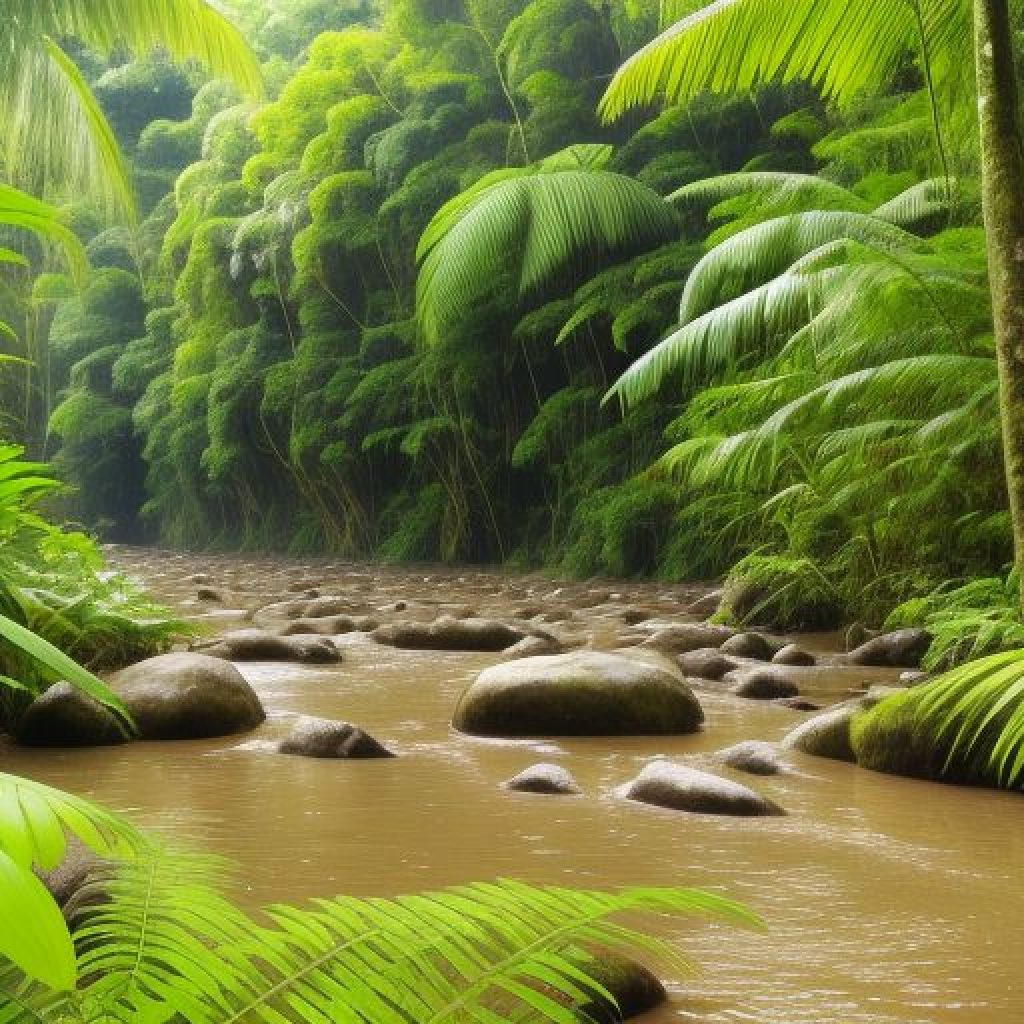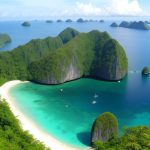The history of the Amazon rainforest is a fascinating tale spanning hundreds of millions of years, shaped by dramatic geological and climatic changes that have moulded one of the most biodiverse regions on Earth.
The story of the Amazon begins around 184 million years ago, when powerful volcanic activity broke apart the supercontinent of Gondwana, separating what is now South America from Africa. This tectonic movement set the stage for the eventual formation of the Amazon basin and the rise of the Andes Mountains to the west. The Amazon rainforest is located in nine countries, with the majority of it spread across Brazil, followed by Peru, Colombia, Bolivia, Venezuela, Ecuador, Guyana, Suriname, and French Guiana.
Around 25 million years ago, the collision of the South American and Nazca tectonic plates caused the Andes Mountains to begin rising. The uplift of the Andes was a crucial driver in the development of the Amazon, as the mountains provided the sediment that was eroded and deposited into the Amazon basin, creating the fertile soils necessary for the lush rainforest to flourish.
During the periodic ice ages over the past 21,000 years, the Amazon region experienced significant changes in climate and vegetation cover. While there is debate among scientists, some evidence suggests the rainforest was reduced to isolated patches during colder, drier periods, which may have contributed to the incredible biodiversity of the region by driving speciation as species adapted to the changing conditions.
The Amazon has been home to indigenous peoples for at least 11,200 years, with evidence of late-prehistoric settlements along the forest’s periphery by around AD 1250. These early inhabitants developed sophisticated agricultural practices that allowed them to thrive in the Amazon’s challenging environment.
In more recent centuries, the Amazon has faced growing threats from deforestation, with over 17% of the original forest already lost, primarily due to activities like logging, agriculture, and mining. Protecting this vital ecosystem is crucial, as the Amazon plays a crucial role in regulating the global climate and supporting the incredible biodiversity that has evolved over millions of years.
10 Facts About Amazon Rainforest

The Amazon rainforest is a fascinating and vital ecosystem that supports a vast array of plant and animal life. Here are some fun and interesting facts about the Amazon jungle:
- Largest Tropical Rainforest: The Amazon rainforest is the world’s largest tropical rainforest, covering over 5.5 million square kilometers, which is roughly the size of the United States or the European Union.
- Oxygen Production: The Amazon rainforest is responsible for producing 20% of the world’s oxygen through photosynthesis, earning it the nickname “the lungs of the Earth”.
- Biodiversity Hotspot: The Amazon rainforest is home to an estimated 30% of all known plant and animal species, with new species being discovered at a rate of one every three days.
- Carbon Sink: The Amazon rainforest plays a crucial role in absorbing and storing carbon dioxide from the atmosphere, making it a vital component in the fight against climate change.
- Indigenous Peoples: The Amazon rainforest is home to over 30 million people, including indigenous communities that have lived there for thousands of years, with many still maintaining their traditional ways of life.
- Deforestation Threats: Despite its importance, the Amazon rainforest is facing significant threats from deforestation, with more than 13% of the forest lost in the past 60 years, and rates of deforestation increasing in recent years.
- Fertilization from the Sahara: The Amazon rainforest receives essential nutrients, including phosphorus, from the Sahara Desert in Africa, which helps sustain the forest’s biodiversity.
- Food Origin: The Amazon rainforest is the origin of over 80% of the world’s food varieties, highlighting its significance in global food security.
- Medicinal Plants: The Amazon rainforest is a treasure trove of medicinal plants, with many species still untested by scientists, yet providing the basis for 25% of all western pharmaceuticals.
- Fascinating Creatures: The Amazon rainforest is home to a vast array of fascinating and deadly creatures, including anacondas, jaguars, harpy eagles, and poison dart frogs, among many others.
These fun facts highlight the incredible importance and diversity of the Amazon rainforest, emphasizing the need for conservation efforts to protect this vital ecosystem for future generations.
How Has Deforestation Impacted The Amazon Rain-forest?
Deforestation has had significant impacts on the Amazon rainforest, affecting both the environment and local communities in various ways. Here are some key impacts of deforestation on the Amazon:
- Displacement of Indigenous Peoples: Deforestation leads to the displacement of Indigenous communities who rely on the forest for their survival, threatening their homes and livelihoods.
- Loss of Biodiversity: Deforestation results in the loss of habitat for countless plant and animal species unique to the Amazon, leading to a reduction in biodiversity and disrupting the balance of the ecosystem.
- Soil Erosion: Deforestation causes soil erosion, depleting the fertile soil of the Amazon and impacting its ability to support plant and animal life, affecting local communities’ economic opportunities.
- Climate Change: Trees act as natural carbon sinks, absorbing carbon dioxide. When trees are cut down, large amounts of carbon dioxide are released into the atmosphere, exacerbating climate change by contributing to rising temperatures, sea levels, and more frequent natural disasters.
- Water Cycle Disruption: The Amazon rainforest plays a crucial role in the water cycle, generating rainfall through transpiration. Deforestation disrupts this cycle, leading to a decline in rainfall and affecting water availability for millions of people.
- Loss of Unknown Species: The Amazon is home to millions of plant and animal species, many of which are yet to be discovered. Deforestation destroys these species before they are even known, leading to the loss of potential contributions to world civilization and food sources.
- Contribution to Global Warming: Deforestation in the Amazon contributes to global warming by releasing carbon dioxide into the atmosphere, reducing the forest’s ability to absorb carbon dioxide and turning the Amazon from a carbon sink into a carbon source.
These impacts underscore the urgent need for effective measures to curb deforestation in the Amazon and protect this vital ecosystem for the well-being of both the environment and humanity.
What Are Some Indigenous Communities Living In The Amazon Rain-forest?
Deforestation has had significant impacts on the Amazon rainforest, affecting both the environment and local communities in various ways. Here are some key impacts of deforestation on the Amazon:
- Displacement of Indigenous Peoples: Deforestation leads to the displacement of Indigenous communities who rely on the forest for their survival, threatening their homes and livelihoods.
- Loss of Biodiversity: Deforestation results in the loss of habitat for countless plant and animal species unique to the Amazon, leading to a reduction in biodiversity and disrupting the balance of the ecosystem.
- Soil Erosion: Deforestation causes soil erosion, depleting the fertile soil of the Amazon and impacting its ability to support plant and animal life, affecting local communities’ economic opportunities.
- Climate Change: Trees act as natural carbon sinks, absorbing carbon dioxide. When trees are cut down, large amounts of carbon dioxide are released into the atmosphere, exacerbating climate change by contributing to rising temperatures, sea levels, and more frequent natural disasters.
- Water Cycle Disruption: The Amazon rainforest plays a crucial role in the water cycle, generating rainfall through transpiration. Deforestation disrupts this cycle, leading to a decline in rainfall and affecting water availability for millions of people.
- Loss of Unknown Species: The Amazon is home to millions of plant and animal species, many of which are yet to be discovered. Deforestation destroys these species before they are even known, leading to the loss of potential contributions to world civilization and food sources.
- Contribution to Global Warming: Deforestation in the Amazon contributes to global warming by releasing carbon dioxide into the atmosphere, reducing the forest’s ability to absorb carbon dioxide and turning the Amazon from a carbon sink into a carbon source..
These impacts underscore the urgent need for effective measures to curb deforestation in the Amazon and protect this vital ecosystem for the well-being of both the environment and humanity.
Conclusion
The history of the Amazon rainforest is a captivating tale of geological, climatic, and human forces that have shaped one of the most remarkable and vital ecosystems on our planet. From its origins over 200 million years ago to the rise of indigenous civilizations and the modern-day threats it faces, the Amazon’s story is a testament to the resilience and fragility of our natural world.
The Amazon’s long and complex history underscores the importance of preserving this irreplaceable resource for future generations. As we grapple with the challenges of climate change and biodiversity loss, safeguarding the Amazon rainforest must be a global priority. By understanding and appreciating the Amazon’s remarkable past, we can be better equipped to protect its future and ensure that this incredible natural wonder continues to thrive for centuries to come.


